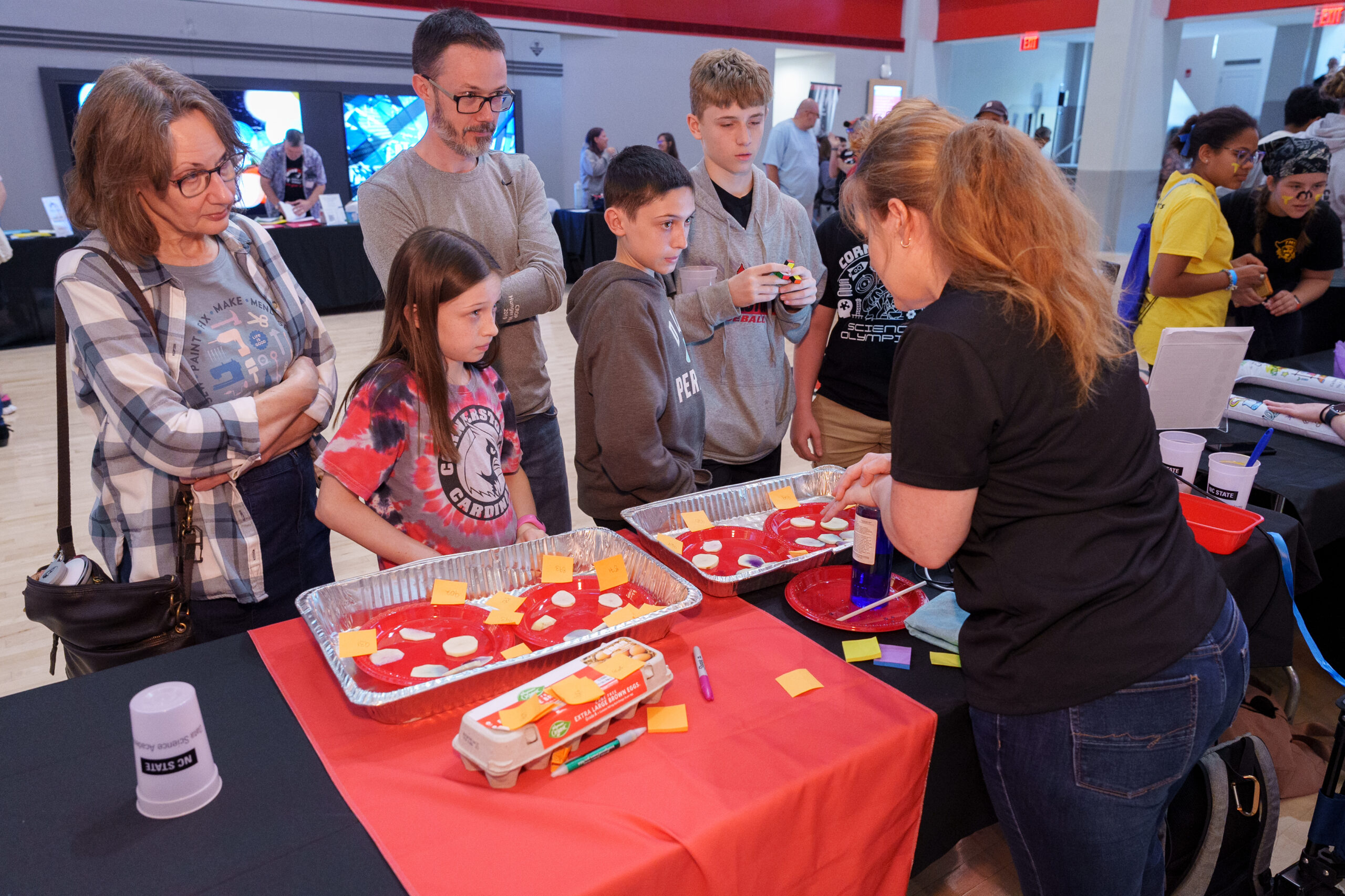Data Stories in the Classroom: Resources for Teaching and Learning
We spotlight and support NC teachers enriching their content and their students’ education with data and AI.
We shine a light on NC educators.
The Data Science and AI Academy would like to highlight and support teachers across North Carolina bringing data, data science, and AI skills to their classrooms. Are you, or someone you know, working to build early foundational data skills among your students by using data to enrich student learning? Tell us your story and help us share your resources with other educators.
Submit Resources & Subscribe to the K-12 Newsletter


Teaching and Learning Resources
Lesson Plans Submitted by NC Educators
Learning with Data – PFAS Water Contamination
Grade(s): 8th – 12th
Subject(s): Science, Social Studies, Math
This lesson is designed to walk students through the data-wrangling process. Students learn how to clean up raw datasets to get them ready for analysis. It is designed as a case study approach to encourage students to decide how they may want to analyze the data. The case study focuses on PFAS levels at various water collection sites along the Cape Fear River. It is a simple dataset with only 3 variables and introduces students to the CODAP platform for low-entry analysis. The Teacher Guide offers suggestions for group activities and ideas about their possible datasets that students can use to look for correlations and to build a data story.
How did it go?:
This lesson was presented to 8th grade – high school science teachers during a professional development workshop. The teachers appreciated the community-based relevance of the data and the ease of use of the CODAP platform. They found the data cleaning process easy to follow but did struggle during some parts of the analysis, particularly with making decisions about how to analyze the data.
Learning with Data – NC Survey on Human Health and the Environment
Grade(s): 8th – 12th
Subject(s): Science, Social Studies, Math
This lesson is designed to walk students through the data-wrangling process. Students learn how to clean up raw datasets to get them ready for analysis. It is designed as a case study approach to encourage students to decide how they may want to analyze the data. The case study focuses on the results from the 2021 and 2022 NC Surveys on Human Health and the Environment. These datasets are more complex using Likert Scale data and a large number of variables (100+). The lesson introduces students to the CODAP platform for low-entry analysis. The Teacher Guide offers suggestions for group activities and ideas about other possible datasets that students can use to look for correlations and to build a data story.
How did it go?:
This lesson was presented to 8th grade – high school science teachers during a professional development workshop. The teachers appreciated the community-based relevance of the data and the ease of use of the CODAP platform. They found the data cleaning process easy to follow but did struggle during some parts of the analysis, particularly with making decisions about how to analyze the data.
Example Lesson Plans
- Data Investigation Process
- Data Wrangling using PFAS data:
- Building Student Agency via My River: PFAS Contamination & Data Analysis via Air Quality Data from Colfax, LA.
- Data Wrangling using NC Health Survey Data:
K-12 Data Analysis & Visualization Tools
- Common Online Data Analysis Platform (CODAP)
- Completely open-source.
- How’d You Do That In CODAP
- CODAP Basic Tutorial
- CODAP Intermediate Tutorial
- WEKA
- Tableau
- Flourish
- RAWGraphs
Modeling With Data
- COMAP: The High School Mathematical Contest in Modeling (HiMCM) & The Middle Mathematical Contest in Modeling (MidMCM)
- M3C: Modeling Handbooks
- Using Mathematical Modeling to Get Real With Students
Professional Development
Datasets
Repositories of Datasets:
- What’s Going On in This Graph?
- CORGIS: The Collection of Really Great, Interesting, Situated Datasets
- Kaggle Datasets
- Data Is Plural – a weekly newsletter of useful/curious datasets.
- Key2STATS Datasets
- Trello
- Sage Data
- CODAP Data Biographies
- UC Irvine Machine Learning Repository
- Oceans of Data
Census Data
Science Data
- National Center for Science and Engineering Statistics
- List of NOAA Open Data Dissemination Program Datasets
- NOAA’s Data in the Classroom
- My NASA Data
- USGS Data in Schools
- US Department of Agriculture
- GLOBE (Global Learning and Observations to Benefit the Environment) Program
- Community Collaborative Rain, Hail & Snow Network (CoCoRaHS)
- National Geographic MapMaker
- EPA: EnviroAtlas
- US Energy Information Administration
- Geothermal Data Repository (GDR)
- Journey North: Tracking Migrations and Seasons
- Data Puzzles – classroom-friendly scientific datasets
- My Mom is a Mob boss – K-3 Animal Data
- National Center for Education Statistics
- Nation Center for Science Education: DataWise
North Carolina Data
- NC OneMap: Geographic Data Serving a Statewide Community
- NC Public Schools Statistical Profile
- NC State Center for Health Statistics (SCHS)
- North Carolina Public Library Statistics
- NCDOT: Traffic Volume Maps
- NCDOT Annual Average Daily Traffic (AADT) Mapping Application
- NCDOT Traffic Viewer
- NC Department of Agriculture and Consumer Services: 2022 Public Animal Shelter Report & 2023 Public Animal Shelter Report
- Durham Open Data Portal
- North Carolina Income Table
- NCSU Center for Health & Environment (CHHE) datasets:
- 2017 PFAS Surface Water Samples & Codebook
- Well Water Data & Codebook
- PFAS experimental data-greenhouse lettuce
- PFAS in Zebrafish: S1, S2, S3, Fig3, Fig4 & Codebook
- Cleaned PFAS Data
- Air Quality (burn sites in Colfax, LA), Data Dictionary, and Codebook
- 2020 NC Public Health Survey Data & Codebook
- 2021 NC Public Health Survey Data & Codebook
- Cadmium Mouse Behavior Trials